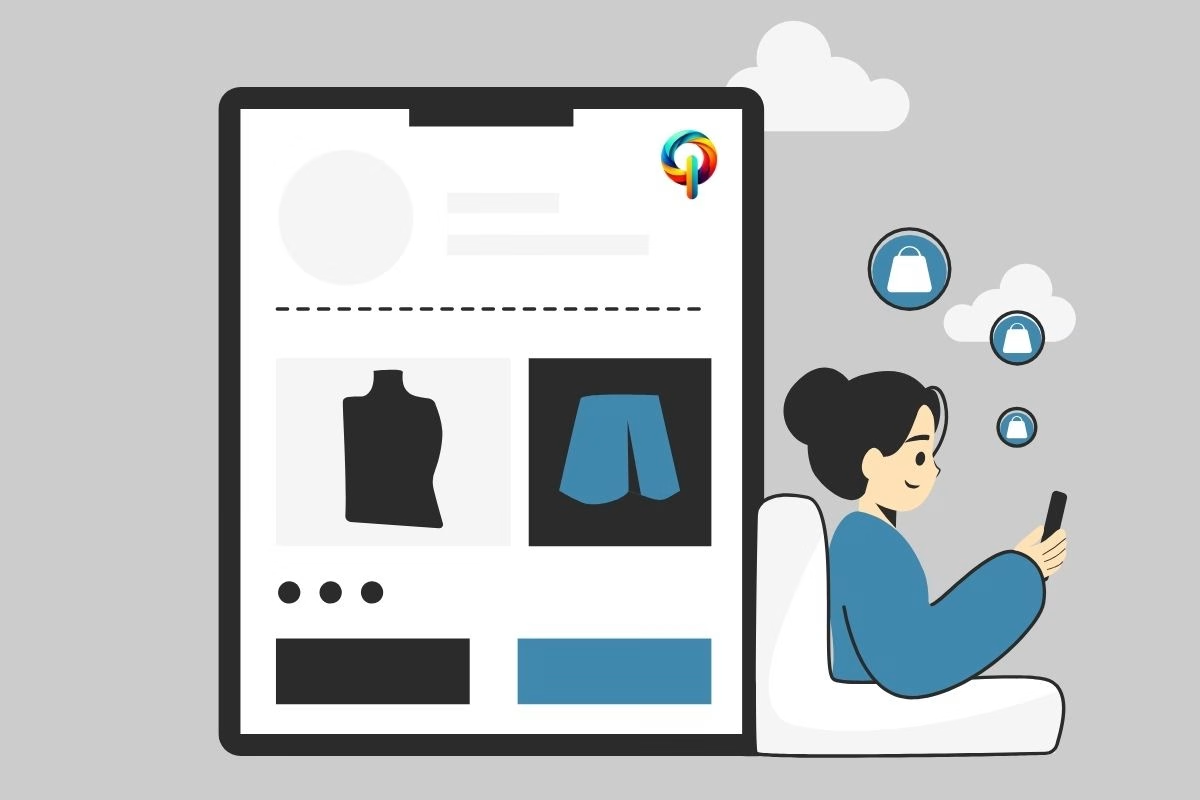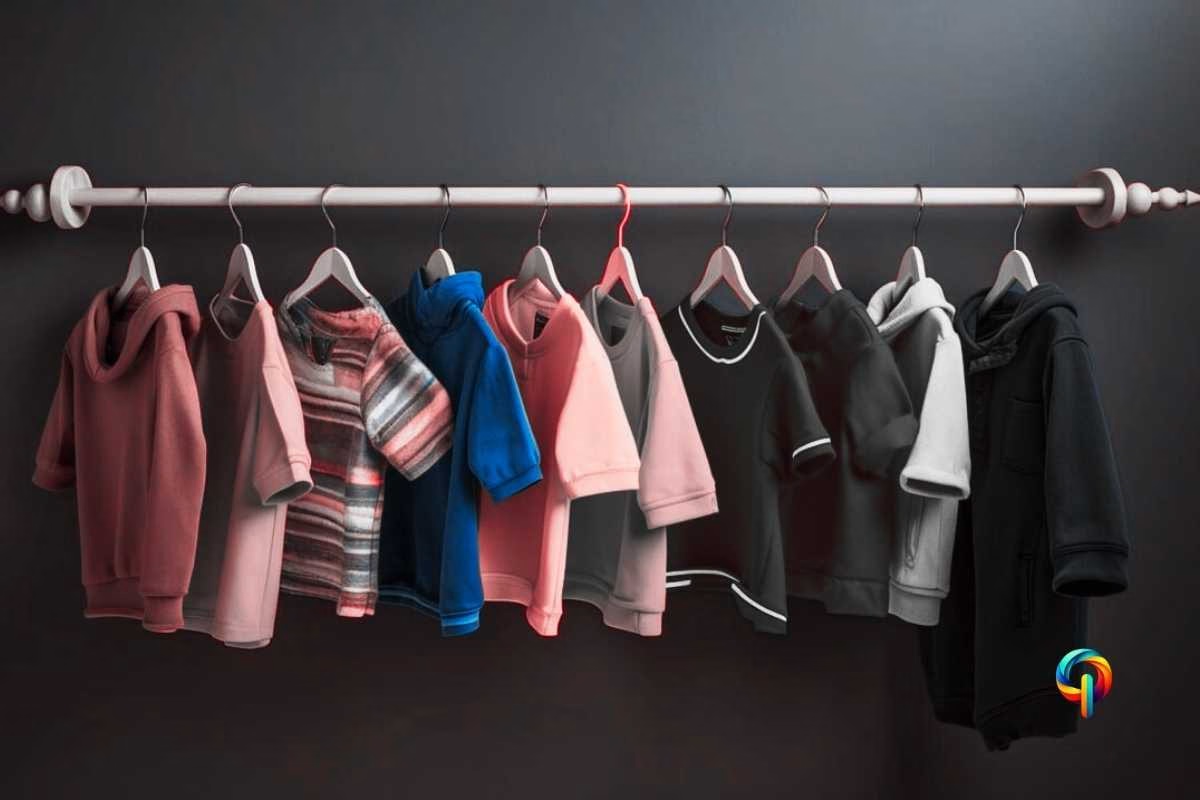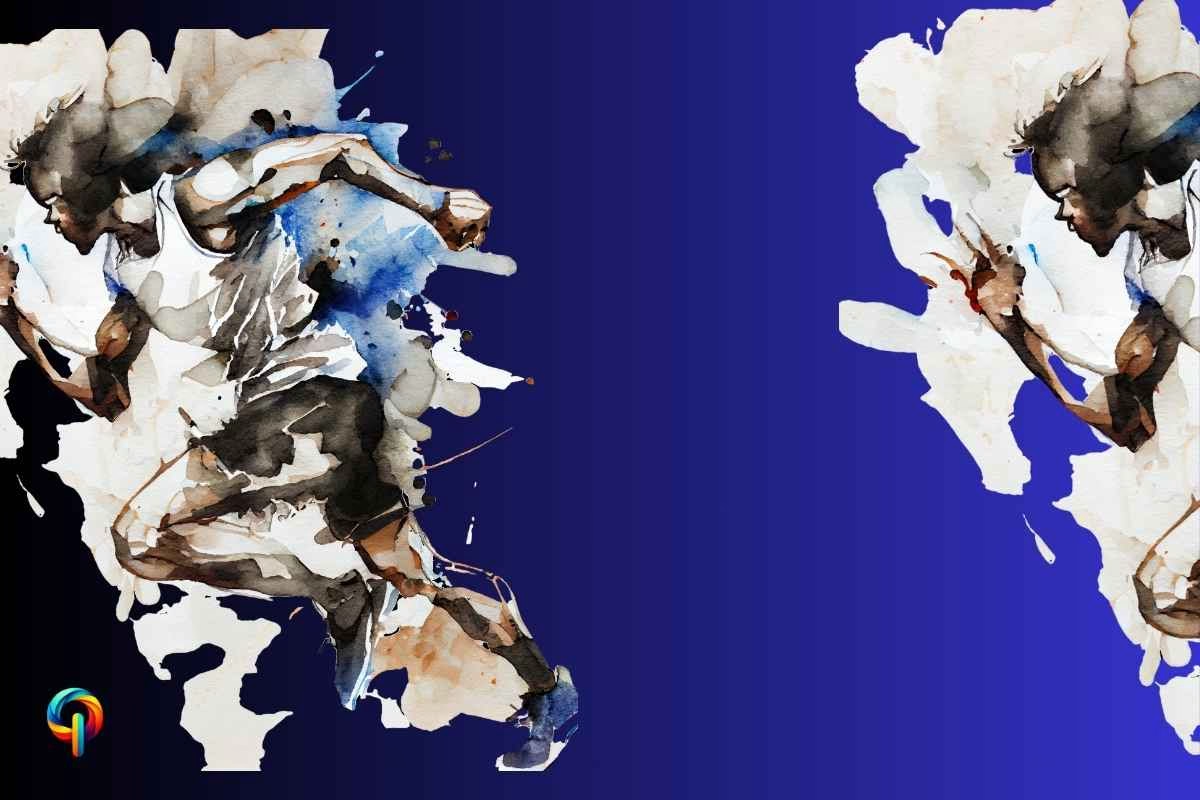
The provided text explores the profound impact of e-commerce on the fashion industry. It details how online platforms are revolutionizing the shopping experience through features like virtual try-ons and AI-driven recommendations, benefiting both consumers and brands. The article further examines the economic advantages for brands and enhanced consumer experiences resulting from this shift. Finally, it looks toward the future of fashion e-commerce, predicting a fully digital landscape with immersive virtual experiences and personalized shopping dominating.
Document Tabs on This Article
How Is E-Commerce In FashionTransforming the Shopping Experience?
Remember the days when shopping for clothes meant spending hours at the mall, waiting in long fitting room lines, and lugging around heavy shopping bags? Those days are fading fast, thanks to the rise of e-commerce in fashion. Today, you can browse the latest trends, try on outfits virtually, and have your favorite pieces delivered to your doorstep—all without leaving your couch.
E-commerce has completely transformed the way we shop for clothing, accessories, and footwear. Platforms like Amazon, ASOS, and Zalando have made it easier than ever to discover new brands, compare prices, and read reviews before making a purchase. But it’s not just about convenience—e-commerce has also opened up a world of possibilities for personalized shopping experiences. For example, Stitch Fix uses algorithms to curate outfits tailored to your style, while Gucci lets you try on sneakers virtually using augmented reality.
This shift isn’t just changing how we shop; it’s reshaping the entire fashion industry. From small indie brands to global giants, businesses are embracing e-commerce to reach customers worldwide, reduce overhead costs, and stay ahead of trends. And with innovations like AI-driven recommendations, virtual fitting rooms, and sustainable shopping options, the future of fashion e-commerce looks brighter than ever.
In this article, we’ll dive into how e-commerce is revolutionizing the fashion industry, explore its impact on consumer behavior, and take a peek at the exciting trends shaping the future of online shopping.
Ready to see “What Are The Key Sustainable Fashion Trends Shaping The Industry Today?”
Let’s get started!
What is E-commerce in Fashion?
E-commerce in fashion is all about buying and selling clothes, accessories, and footwear online. Instead of visiting physical stores, you can shop from your phone, tablet, or computer.
It’s like having a massive shopping mall in your pocket, open 24/7, with endless options to explore.
But it’s not just about shopping online—it’s about how technology is changing the way we experience fashion. From virtual try-ons to personalized recommendations, e-commerce is making fashion more convenient, fun, and tailored to your style.
For example, think about how easy it is to browse through thousands of products on platforms like ASOS or Amazon Fashion. You can read reviews, compare prices, and even see how an outfit looks on someone with a similar body type. And if you’re not sure what to buy, AI-powered tools can suggest items based on your preferences, almost like having a personal stylist.
E-commerce is also breaking down barriers. Small brands from around the world can now reach global audiences, and shoppers can discover unique pieces they’d never find in their local stores. Plus, with features like live shopping events and sustainability filters, online shopping is becoming more interactive and eco-friendly.

In short, e-commerce in fashion is revolutionizing how we shop, making it faster, smarter, and more personalized than ever before.
Definition and Importance of E-commerce in Fashion
E-commerce in fashion is all about buying and selling clothing, accessories, and footwear through online platforms. It’s like having a global wardrobe at your fingertips, where you can shop from anywhere, anytime, without stepping into a physical store. But it’s not just about convenience—it’s a game-changer for the entire fashion industry.
The importance of e-commerce in fashion lies in its ability to offer convenience, variety, and personalization. For example, platforms like Farfetch connect shoppers with luxury boutiques worldwide, giving you access to unique pieces you’d never find locally. No more hopping from store to store—everything you need is just a click away.
E-commerce also provides a wider product range. Unlike traditional stores limited by shelf space, online platforms can showcase endless options. Take Boohoo, for instance—it offers trendy, affordable fashion with new arrivals every week, ensuring you’re always up-to-date with the latest styles.
Personalization is another major benefit. Brands like Rent the Runway allow you to rent designer outfits tailored to your preferences, while Uniqlo uses AI to recommend sizes and styles based on your past purchases. This level of customization makes shopping more enjoyable and relevant to your unique taste.
In short, e-commerce in fashion isn’t just a trend—it’s a cornerstone of modern retail, making shopping faster, smarter, and more personalized than ever before.
Key Features of E-commerce in Fashion Platforms
What makes fashion e-commerce platforms so special? It’s the innovative features that turn online shopping from a simple transaction into an exciting, interactive experience. These features aren’t just about making shopping easier—they’re about making it smarter, more personalized, and even fun. Let’s dive into the key features that are transforming the way we shop for fashion online:
1. Virtual Try-Ons
Ever wished you could try on clothes without stepping into a fitting room? Thanks to augmented reality (AR) technology, brands like Gucci and Warby Parker are making this possible. With virtual try-ons, you can see how a pair of sunglasses, a dress, or even sneakers looks on you—right from your phone! For example, Warby Parker’s virtual try-on tool lets you test different eyewear styles by simply uploading a selfie. It’s like having a fitting room in your pocket, saving you time and making online shopping more confident and hassle-free.
2. AI-Driven Recommendations
Imagine having a personal stylist who knows your taste better than you do. That’s exactly what AI-driven recommendations offer. Platforms like Amazon and Net-a-Porter use artificial intelligence to analyze your browsing history, past purchases, and even items you’ve liked or saved. Based on this data, they suggest products that match your style. For instance, if you’ve been searching for summer dresses, the platform might recommend lightweight smart fabrics, trendy prints, or accessories that complete the look. It’s like having a fashion expert guiding you through your shopping journey.
3. Seamless Payment Options
Gone are the days of fumbling for your wallet or waiting in long checkout lines. E-commerce platforms have revolutionized payments with features like one-click purchases, digital wallets, and buy-now-pay-later services. For example, Klarna allows you to split your payment into interest-free installments, making it easier to shop for that designer bag or winter coat without breaking the bank. These seamless payment options not only save time but also make high-quality fashion more accessible to everyone.
4. Sustainability Filters
As consumers become more eco-conscious, fashion e-commerce platforms are stepping up to meet the demand for sustainable shopping. Platforms like ThredUp and Depop let you filter products based on sustainability criteria, such as recycled materials, ethical production practices, or carbon-neutral shipping. For instance, if you’re looking for a new pair of jeans, you can choose options made from organic cotton or recycled denim. These filters empower shoppers to make environmentally friendly choices without sacrificing style.
5. Live Shopping Events
Who says online shopping has to be a solo activity? Brands like H&M and Zara are hosting live-streamed fashion shows, Q&A sessions, and interactive shopping events. During these events, hosts showcase the latest collections, answer questions in real-time, and even offer exclusive discounts. It’s like attending a fashion show from the comfort of your home, with the added bonus of being able to shop the looks instantly. These live events create a sense of community and excitement, making online shopping more engaging than ever.
Why These Features Matter
These features aren’t just cool add-ons—they’re transforming the way we shop for fashion. They make online shopping more convenient, personalized, and enjoyable, while also addressing modern concerns like sustainability and accessibility. Whether you’re a tech-savvy shopper or someone who just loves a good deal, these innovations are setting new standards for the fashion industry and redefining what it means to shop online.
The Role of E-commerce in the Fashion Industry
E-commerce has become a driving force in the fashion industry, reshaping how consumers shop and how brands operate. From offering unparalleled convenience to creating new opportunities for businesses, online platforms are changing the game. Let’s explore how e-commerce is enhancing the shopping experience for consumers and transforming the way fashion brands connect with their audiences.
How E-commerce Enhances Consumer Convenience
E-commerce has made shopping for fashion easier and more convenient than ever. With online platforms, consumers can browse, compare, and purchase products anytime, anywhere. No more rushing to stores before they close or dealing with crowded aisles—everything you need is just a few clicks away.
One of the biggest advantages is access to a global marketplace. Shoppers can explore brands and styles from around the world, discovering unique pieces that might not be available locally. Features like detailed size guides, customer reviews, and easy return policies further enhance the experience, helping buyers make confident decisions without the guesswork.
Additionally, e-commerce platforms often provide personalized recommendations based on browsing history and preferences. This tailored approach saves time and makes shopping more enjoyable, as consumers are presented with options that align with their tastes.
In short, e-commerce puts the power of choice and convenience directly into the hands of consumers, making fashion shopping faster, smarter, and more accessible.
The Impact of E-commerce in Fashion on Brands
For fashion brands, e-commerce is more than just a sales channel—it’s a powerful tool for growth and innovation. By moving online, brands can reach a global audience without the limitations of physical store locations. This opens up new markets and opportunities, allowing even smaller brands to compete with established players.
E-commerce also provides valuable consumer data, helping brands understand their customers better. From browsing patterns to purchase history, this information enables personalized marketing strategies that resonate with shoppers. For example, brands can send targeted promotions or recommend products based on past behavior, creating a more engaging and relevant shopping experience.
Another major benefit is cost efficiency. Operating online reduces the need for expensive retail spaces and large inventories, making it easier for brands to manage resources and scale their businesses. This is especially beneficial for emerging designers and independent labels looking to make their mark in the industry.

In essence, e-commerce is leveling the playing field, giving fashion brands of all sizes the tools to thrive in a competitive market.
Benefits of E-commerce in Fashion
E-commerce has become a game-changer for the fashion industry, offering a wealth of benefits for both brands and consumers. From cutting costs to creating unforgettable shopping experiences, online platforms are transforming the way we think about fashion. Let’s dive into the economic advantages for brands and the enhanced experiences for shoppers.
Economic Benefits of E-commerce in Fashion for Brands
For fashion brands, e-commerce is a goldmine of opportunities. One of the biggest advantages is the reduction in overhead costs. Unlike traditional brick-and-mortar stores, online platforms don’t require expensive retail spaces, utility bills, or large in-store staff. This allows brands to allocate resources more efficiently, investing in areas like product development or marketing.
E-commerce also opens the door to increased sales. With a global audience just a click away, brands can reach customers far beyond their local markets. This expanded reach not only boosts revenue but also helps brands build a loyal international following.
Another key benefit is scalability. Online platforms make it easier for brands to grow quickly without the constraints of physical locations. Whether it’s a small indie label or an established designer, e-commerce provides the tools to scale operations and adapt to changing market demands.
Finally, e-commerce fosters innovation in marketing and customer engagement. Brands can use data analytics to understand consumer behavior, create targeted campaigns, and offer personalized shopping experiences. This not only drives sales but also builds stronger connections with customers.
In short, e-commerce is a powerful tool that helps fashion brands thrive in a competitive and ever-evolving industry.
Enhanced Shopping Experiences for Consumers
For consumers, e-commerce has turned fashion shopping into an exciting, personalized, and immersive experience. Thanks to advancements in technology, online platforms are offering features that make shopping more convenient and enjoyable than ever.
One standout feature is AI-driven style recommendations. By analyzing your browsing history, past purchases, and preferences, e-commerce platforms can suggest products that match your unique style. It’s like having a personal stylist who knows exactly what you’re looking for.
Another game-changer is augmented reality (AR) try-ons. Imagine being able to see how a pair of sunglasses, a dress, or even sneakers looks on you—right from your phone. This technology eliminates the guesswork of online shopping, helping you make confident decisions without stepping into a fitting room.
E-commerce platforms also offer features like virtual showrooms and live shopping events, where you can interact with hosts, ask questions, and shop in real-time. These experiences create a sense of connection and excitement, making online shopping feel more engaging and interactive.
In essence, e-commerce in fashion is revolutionizing the way consumers shop for fashion, offering convenience, personalization, and a touch of innovation that keeps them coming back for more.
The Future of E-commerce in Fashion
The fashion industry is no stranger to change, but nothing has shaken it up quite like e-commerce in fashion. What started as a convenient way to shop online has now become a driving force, reshaping how we discover, buy, and experience fashion. From virtual try-ons to AI-driven recommendations, the digital revolution is here, and it’s only getting bigger.
But what does the future hold? As technology advances and consumer expectations evolve, e-commerce in fashion is set to transform the industry in ways we’re only beginning to imagine. Let’s explore the global trends shaping this transformation and how the path to a fully digital fashion industry is becoming clearer every day.
Global Trends in Fashion E-commerce Adoption
The adoption of e-commerce in fashion is skyrocketing worldwide, and it’s not hard to see why. With the rise of smartphones, faster internet, and innovative technologies, shopping for fashion online has never been easier—or more exciting.
One major driver is changing consumer preferences. Today’s shoppers want convenience, variety, and personalized experiences, all of which e-commerce in fashion delivers effortlessly. Whether it’s browsing the latest trends during a lunch break or ordering a custom-fit outfit from the comfort of home, online platforms are meeting these demands head-on.
Another key trend is the rise of mobile shopping. With more people using their phones to browse and buy, fashion brands are optimizing their platforms for mobile users. From seamless navigation to one-click purchases, mobile-friendly designs are making online shopping smoother than ever.
Technological advancements are also playing a huge role. Features like augmented reality (AR) try-ons, AI-driven recommendations, and virtual showrooms are not just gimmicks—they’re becoming essential tools for engaging customers and driving sales.
In short, e-commerce in fashion is no longer a niche trend—it’s a global movement that’s here to stay.
The Path to a Fully Digital Fashion Industry
As e-commerce in fashion continues to evolve, it’s paving the way for a fully digital fashion industry. Imagine a world where virtual experiences and personalized shopping dominate, and physical stores are just one part of a larger, interconnected ecosystem.
One of the most exciting possibilities is the rise of virtual fashion experiences. From digital fashion shows to 3D virtual fitting rooms, brands are creating immersive ways for shoppers to engage with their products. For example, you could attend a live-streamed runway event, try on outfits virtually, and make purchases—all without leaving your home.
Personalization is another cornerstone of this digital future. With advancements in AI and data analytics, e-commerce in fashion platforms can offer hyper-personalized recommendations, tailored promotions, and even custom-designed clothing. It’s like having a personal stylist who knows your taste better than you do.
Sustainability is also a key focus. As the fashion industry faces growing pressure to reduce its environmental impact, e-commerce in fashion is leading the charge with innovations like virtual sampling, which reduces the need for physical prototypes, and digital wardrobes, which encourage mindful consumption.
The future of e-commerce in fashion is bright, bold, and boundary-pushing. It’s not just about selling clothes—it’s about creating experiences, building connections, and redefining what fashion means in a digital age.
More FAQs On E-commerce in Fashion
1. What is e-commerce in fashion?
E-commerce in fashion refers to the online buying and selling of clothing, accessories, and footwear through digital platforms. Instead of visiting physical stores, shoppers can browse, compare, and purchase products from the comfort of their homes using websites or apps. It’s like having a global mall at your fingertips, open 24/7, with endless options to explore.
2. How does e-commerce impact the fashion industry?
E-commerce in fashion is reshaping the industry in profound ways. It enhances convenience for shoppers, allowing them to shop anytime, anywhere. For brands, it expands market reach, enabling them to connect with customers worldwide. It also drives innovation, pushing brands to adopt new technologies like virtual try-ons and AI-driven recommendations to stay competitive. In short, e-commerce is making fashion more accessible, personalized, and dynamic.
3. What are the benefits of e-commerce for fashion brands?
For fashion brands, e-commerce in fashion offers a wealth of benefits. First, it reduces overhead costs by eliminating the need for expensive physical stores. Second, it provides access to a global audience, helping brands reach customers far beyond their local markets. Third, it offers valuable consumer data, which can be used to create personalized marketing campaigns and improve customer experiences. These advantages make e-commerce a powerful tool for growth and innovation.
4. What are the challenges of e-commerce in fashion?
While e-commerce in fashion has many advantages, it also comes with challenges. Logistics management, such as handling shipping and returns, can be complex and costly. Market competition is fierce, with countless brands vying for attention online. Additionally, ensuring a seamless customer experience—from browsing to checkout—requires constant optimization. Overcoming these challenges is essential for brands to thrive in the digital marketplace.
5. What are the latest trends in fashion e-commerce?
The latest trends in e-commerce in fashion are all about innovation and sustainability. Virtual try-ons, powered by augmented reality (AR), allow shoppers to see how clothes look on them without visiting a store. Sustainable fashion marketplaces are gaining popularity, offering eco-friendly and second-hand options. Social commerce, where brands sell directly through platforms like Instagram and TikTok, is also on the rise. These trends are making online shopping more interactive, eco-conscious, and community-driven.
6. How is technology shaping fashion e-commerce?
Technology is at the heart of e-commerce in fashion. Augmented reality (AR) and virtual reality (VR) are creating immersive experiences, like virtual fitting rooms and digital fashion shows. Artificial intelligence (AI) is powering personalized recommendations, helping shoppers find products that match their style. Even blockchain technology is being used to ensure transparency in sustainable fashion. These innovations are making online shopping smarter, faster, and more engaging.
7. What is the future of e-commerce in fashion?
The future of e-commerce in fashion is incredibly exciting. We’re moving toward a fully digital fashion industry, where virtual experiences and personalized shopping dominate. Imagine attending a virtual fashion show, trying on outfits in a 3D virtual fitting room, and making purchases—all from your home. Omnichannel retail, which blends online and offline shopping, will also play a big role. The future is all about creating seamless, immersive, and sustainable shopping experiences.
8. How does e-commerce improve the shopping experience for consumers?
E-commerce in fashion enhances the shopping experience in countless ways. It offers unparalleled convenience, allowing shoppers to browse and buy anytime, anywhere. Personalized recommendations, powered by AI, make it easier to find products that match your style. Innovative features like AR try-ons and virtual showrooms add a fun, interactive element to online shopping. Plus, easy returns and detailed product reviews help shoppers make confident decisions.
9. Can small fashion brands succeed in e-commerce?
Absolutely! E-commerce in fashion levels the playing field, giving small brands the tools to compete with established players. Without the need for expensive physical stores, indie labels can reach a global audience through online platforms. Social media and digital marketing also make it easier for small brands to build a loyal following. With creativity and the right strategy, even the smallest brands can thrive in the digital marketplace.
10. How does e-commerce support sustainable fashion?
E-commerce in fashion is playing a key role in promoting sustainability. Online platforms make it easier for brands to offer eco-friendly options, like clothing made from recycled materials or second-hand fashion. Virtual sampling reduces the need for physical prototypes, cutting down on waste. Digital wardrobes encourage mindful consumption by helping shoppers visualize their existing collections. These innovations are making fashion more sustainable and accessible.
11. What role does social media play in fashion e-commerce?
Social media is a game-changer for e-commerce in fashion. Platforms like Instagram, TikTok, and Pinterest allow brands to showcase their products, engage with customers, and even sell directly through social commerce features. Influencers and user-generated content also play a big role, helping brands build trust and connect with their audience. Social media turns shopping into a social experience, making it more interactive and fun.
12. How do fashion brands handle returns in e-commerce?
Returns are a common challenge in e-commerce in fashion, but brands are finding ways to make the process smoother. Clear return policies, easy-to-use return portals, and partnerships with logistics providers help streamline the process. Some brands even offer free returns to encourage shoppers to buy with confidence. While returns can be costly, they’re an essential part of creating a positive customer experience.
13. What makes e-commerce in fashion different from traditional retail?
E-commerce in fashion offers several advantages over traditional retail. It provides greater convenience, allowing shoppers to browse and buy from anywhere. The product range is often wider, with endless options available at the click of a button. Personalized shopping experiences, powered by AI and data analytics, make it easier to find products that match your style. Plus, innovative features like AR try-ons and virtual showrooms add a fun, interactive element that traditional retail can’t match.
Conclusion: The Future of Fashion is Online
E-commerce in fashion has come a long way from being a convenient alternative to traditional shopping—it’s now a driving force reshaping the entire industry. From offering unparalleled convenience and personalized experiences to fostering innovation and sustainability, online platforms are redefining how we discover, buy, and interact with fashion.
For consumers, e-commerce in fashion means having the world’s wardrobe at their fingertips. Whether it’s trying on clothes virtually, getting AI-driven style recommendations, or shopping sustainably, the online shopping experience is becoming more immersive, engaging, and tailored to individual needs.
For brands, e-commerce in fashion opens up endless opportunities. It levels the playing field, allowing small labels to compete with global giants, while providing established brands with tools to reach new audiences and innovate like never before. The ability to gather consumer data, personalize marketing, and reduce overhead costs makes e-commerce a game-changer for businesses of all sizes.
As we look to the future, the potential of e-commerce in fashion is limitless. Virtual fashion shows, 3D fitting rooms, and omnichannel retail experiences are just the beginning. The industry is moving toward a fully digital landscape where creativity, technology, and sustainability intersect to create unforgettable shopping experiences.
The message is clear: the future of fashion is online, and it’s brighter, bolder, and more exciting than ever. Whether you’re a shopper, a designer, or a brand, e-commerce in fashion is your gateway to a world of endless possibilities.
So, are you ready to embrace the future?





